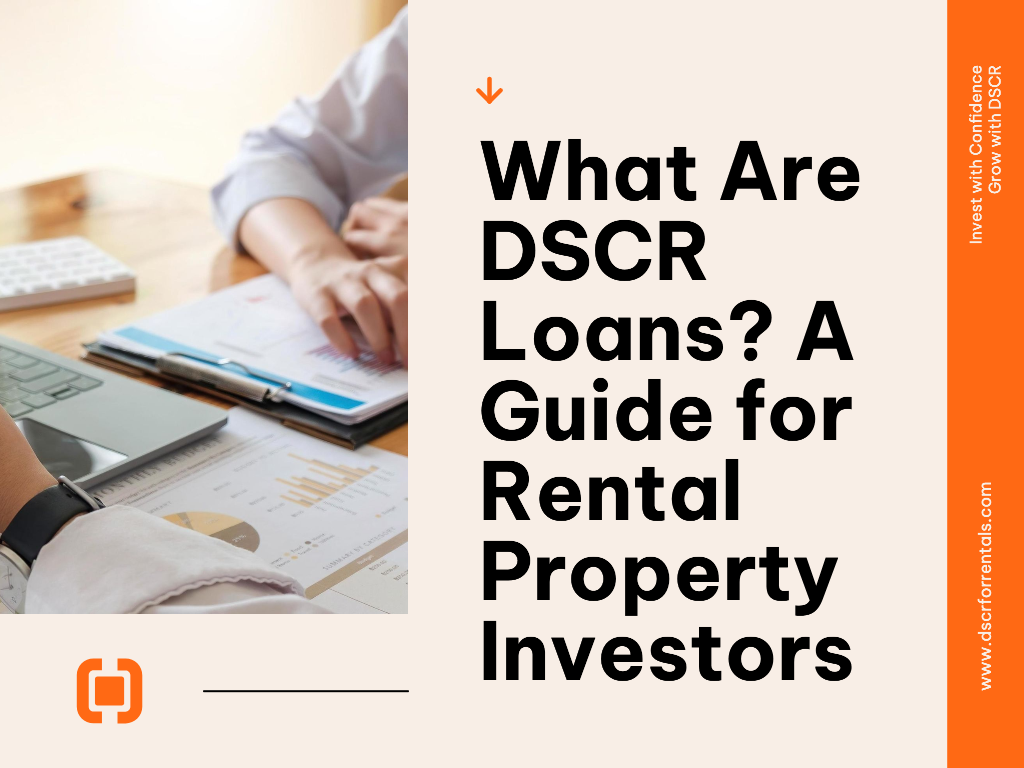DSCR Loan Mistakes to Avoid in 2025 | Investor Guide

Look, I’m going to be straight with you. After working with thousands of investors over the past decade, I’ve seen the same costly DSCR loan mistakes play out time and again. In fact, recent industry data suggests over 40% of real estate investors leave serious money on the table due to avoidable DSCR financing errors.
I don’t want that to be you.
Whether you’re buying your first investment property or scaling to your twentieth, understanding these common pitfalls could literally save you tens of thousands of dollars. The 2025 lending landscape has evolved dramatically, and what worked even two years ago could be costing you big today.
Let me walk you through the most expensive mistakes I see investors make and show you exactly how to avoid them. No fluff, just practical strategies you can implement immediately.
What Are DSCR Loans and Why They Matter for Investors
First things first: DSCR (Debt Service Coverage Ratio) loans are non-QM mortgage products that qualify based on the property’s income rather than your personal finances. They’ve become the go-to financing option for savvy investors because they:
- Don’t count against your conventional loan limits
- Don’t require personal income verification
- Allow for unlimited property scaling
- Can be used for various property types including short-term rentals
The DSCR itself is calculated by dividing the property’s net operating income by its annual debt obligations:
DSCR = Net Operating Income / Annual Debt ServiceMost lenders want to see a minimum DSCR of 1.25x, meaning the property generates 25% more income than needed to cover the mortgage. But here’s where things get interesting (and where mistakes begin)…
Mistake 1: Miscalculating Your Actual DSCR
Real talk: Your spreadsheet calculations probably don’t match how lenders actually determine DSCR. This disconnect is the #1 reason deals fall apart at the last minute.
Just last month, I had a client—let’s call him Mike—who was convinced his duplex would qualify with a 1.35 DSCR based on his calculations. But when the lender ran the numbers, it came in at just 1.18, below their minimum threshold.
Why the difference? Because Mike:
- Used actual rents instead of market rents (lenders often cap at market rate)
- Applied a 5% vacancy factor when the lender used 10%
- Didn’t include management fees (lenders include these even if you self-manage)
- Underestimated insurance costs in a rising premium environment
The fix: Always get a lender’s DSCR worksheet before making offers. Better yet, work with a DSCR loan specialist who can pre-screen properties using actual lender calculations. This approach has saved my clients countless hours and thousands in lost earnest money.
For more on accurate DSCR calculations, check out our Complete DSCR Loan Guide.
Mistake 2: Choosing the Wrong DSCR Lender
Not all DSCR lenders are created equal. The difference between the right and wrong lender can literally mean:
- Up to 1.5% variance in interest rates
- $5,000+ difference in closing costs
- Drastically different reserve requirements
- The difference between approval and rejection
I recently worked with an investor who had been rejected by three lenders before coming to me. Her property was solid, but she kept applying with lenders whose programs weren’t aligned with her specific situation.
Once we matched her with the right lender, she not only got approved but secured a rate 0.875% lower than her best previous offer. On her $400,000 loan, that’s saving her over $3,500 annually!
The fix: Work with a broker who has access to multiple DSCR loan programs and understands the nuances between them. The best brokers know which lenders:
- Are more flexible with lower DSCR ratios
- Offer better terms for experienced investors
- Have competitive programs for specific property types
- Provide the most favorable prepayment terms
You can compare top DSCR lenders here to find your best match based on your specific investment scenario.
Mistake 3: Ignoring the Fine Print in Loan Terms
This mistake has cost my clients hundreds of thousands of dollars collectively.
While most investors obsess over getting the lowest interest rate, they completely overlook critical loan terms that can dramatically impact profitability:
Prepayment penalties are the biggest culprit. Many DSCR loans come with prepayment penalties ranging from 1-5% of the loan amount for the first 3-5 years. On a $400,000 loan, that could mean a $20,000 penalty!
One client saved 0.25% on her rate (about $83/month) but didn’t notice the 5-year, 5% prepayment penalty in the fine print. When she needed to sell unexpectedly after 18 months, that “savings” cost her $19,000 in penalties!
Other critical terms investors miss:
- Balloon payments that come due in 5-10 years
- Interest rate adjustment periods on ARM loans
- Rate caps that limit how high rates can go
- Reserve requirements that tie up your capital
The fix: Always review the loan estimate with a professional who understands investment property financing. The lowest rate isn’t always the best deal when you factor in all terms. For specific guidance on evaluating loan terms, see our DSCR Loan Terms Comparison Guide.
Mistake 4: Poor Property Selection for DSCR Financing
Some properties are DSCR loan magnets. Others are practically impossible to finance this way. The property type and location dramatically impact your ability to secure favorable DSCR financing.
Properties that typically perform well with DSCR loans:
- Small multifamily (2-4 units) in stable markets
- Single-family homes in growing areas
- Short-term rentals in established vacation markets
- Townhomes with reasonable HOA fees
Properties that often struggle with DSCR qualification:
- Luxury properties with limited rental pools
- Properties in declining markets
- Condos with high HOA fees
- Properties needing significant rehabilitation
One client was determined to purchase a vacation rental in an oversaturated market. Despite the listing agent’s promising occupancy projections, when lenders applied their more conservative calculations, the property’s DSCR fell well below 1.0. He ultimately saved himself from a terrible investment by heeding our advice to walk away.
The fix: Before making offers, run potential properties through a DSCR pre-qualification assessment. This quick check can save you thousands in wasted due diligence costs and identify properties that will actually perform well under DSCR lending requirements.
Mistake 5: Inadequate Cash Flow Analysis
This mistake separates amateur investors from professionals. Proper cash flow analysis goes far beyond the simple rent-minus-mortgage calculation many investors rely on.
A common scenario I encounter: An investor projects $2,500 monthly rent and a $1,800 mortgage payment, calculating a healthy $700 monthly cash flow. But they’re missing:
- Property management (10%): -$250
- Vacancy reserves (8%): -$200
- Maintenance reserves (5%): -$125
- Capital expenditure reserves (5%): -$125
- Insurance and property taxes beyond escrow: -$150
That “healthy” $700 cash flow just turned into a negative $150 monthly loss!
The fix: Use conservative estimates and account for ALL expenses. The best DSCR investors I know follow the 50% rule as a quick check—assuming roughly half of rental income will go to expenses besides the mortgage.
For a more precise approach, use our Free Cash Flow Calculator to get a realistic picture of your investment’s performance.
Mistake 6: Missing Crucial Documentation Requirements
DSCR loans may not require your personal income documentation, but they’re incredibly document-intensive for the property itself!
Missing or improper documentation is the leading cause of delays and denials in the DSCR loan process. Here’s what you need to have ready:
- For purchase loans:
- Complete purchase contract with all addendums
- Proof of funds for down payment and reserves
- Market rent analysis or existing leases
- Property insurance quote
- Entity documentation (if purchasing through LLC)
- For refinances:
- Current lease agreements
- 12 months of rent payment history
- Current insurance declaration page
- Most recent mortgage statement
- Property tax statements
Pro tip: DSCR lenders scrutinize lease agreements heavily. Ensure they’re properly executed, cover the correct time period, and match the rental income you’re claiming.
The fix: Work with a DSCR loan specialist who provides a comprehensive document checklist upfront and reviews everything before submission. This approach can cut weeks off your closing timeline and increase approval odds significantly.
Mistake 7: Failing to Adapt to 2025's DSCR Landscape
Now for the good stuff—strategies my most successful clients use to maximize their DSCR loan benefits:
1. Strategically Time Your Applications
Lenders often adjust their guidelines monthly based on market conditions and their loan portfolios. By timing your application strategically, you can capitalize on temporary program enhancements.
For example, one of my clients waited just three weeks to submit his application after we noticed a lender temporarily loosened their DSCR requirements from 1.25 to 1.15. This patience saved him nearly $40,000 in required down payment.
2. Use Credit Strategically
Your personal credit score significantly impacts DSCR loan terms, even though these aren’t personally guaranteed loans. The difference between a 680 and a 740+ score can mean:
- 0.5-0.75% lower interest rate
- Reduced origination fees
- Higher allowed LTV (loan-to-value ratio)
- Lower reserve requirements
Before applying, check your credit through a free monitoring service and address any issues that could be quickly resolved.
3. Build Lender Relationships
The investors getting the absolute best DSCR terms aren’t necessarily those with the best properties—they’re often those with established lender relationships.
One client who finances 3-4 properties annually has negotiated custom terms including waived origination fees and reduced rates simply by concentrating his business with one lender. His annual savings exceed $12,000 just from these relationship benefits!
4. Optimize Your Entity Structure
How you structure ownership can significantly impact your DSCR loan options and terms. While many investors default to using LLCs, this isn’t always optimal from a financing perspective.
Some lenders offer better pricing for properties held in personal names with a subsequent transfer to LLC, while others have special programs for established entities with multiple properties.
For guidance on the best entity structure for your specific situation, consult our Investment Entity Structure Guide.
Conclusion: Taking Action on These Insights
The difference between average and exceptional returns in real estate investing often comes down to financing strategy. By avoiding these seven critical DSCR loan mistakes, you’re already ahead of 80% of investors in today’s market.
Here’s your action plan:
- Review any current DSCR loans for refinancing opportunities
- Get a professional DSCR assessment before your next purchase
- Build relationships with DSCR specialists who understand the current market
- Use our resources to improve your investment analysis
Ready to take your real estate investing to the next level with optimized DSCR financing? Schedule a no-obligation consultation with our team of DSCR specialists. We’ve helped investors just like you secure over $1 billion in investment property financing with industry-leading terms.
Remember, in today’s competitive market, the right financing isn’t just about getting approved—it’s about optimizing every aspect of your loan to maximize long-term returns.
Frequently Asked Questions
What is a DSCR loan?
A DSCR (Debt Service Coverage Ratio) loan is a type of non-QM mortgage specifically designed for investment properties that qualifies based on the property's income rather than the borrower's personal income. The DSCR itself is calculated by dividing the property's net operating income by its annual debt service, with most lenders requiring a minimum ratio of 1.25x.
What are the benefits of using DSCR loans for investment properties?
DSCR loans offer several advantages for real estate investors: they don't count against conventional loan limits, don't require personal income verification, allow for unlimited property scaling, and can be used for various property types including short-term rentals. This makes them ideal for investors looking to build larger portfolios or those who may have complex income situations.
What is the biggest mistake investors make with DSCR loans?
The most common mistake investors make is miscalculating the actual DSCR by using different assumptions than lenders use. Investors often underestimate expenses by not including property management fees (even if self-managing), using too low vacancy rates, and not accounting for all maintenance costs. Lenders typically use standardized calculations that are more conservative than many investors' projections.
How do I choose the right DSCR lender?
Choosing the right DSCR lender involves comparing multiple factors beyond just interest rates. Look for lenders that specialize in your property type, consider their minimum DSCR requirements, evaluate prepayment penalty terms, examine reserve requirements, and assess their experience working with investors like you. Working with a broker who has access to multiple DSCR loan programs often yields the best results as they can match your specific situation to the most appropriate lender.
What property types work best with DSCR loans?
Properties that typically perform well with DSCR loans include small multifamily (2–4 units) in stable markets, single-family homes in growing areas, established short-term rentals in vacation markets, and townhomes with reasonable HOA fees. Properties that often struggle with DSCR qualification include luxury properties with limited rental pools, properties in declining markets, condos with high HOA fees, and properties needing significant rehabilitation.
How important are prepayment penalties in DSCR loans?
Prepayment penalties are extremely important in DSCR loans and often overlooked by investors. These penalties typically range from 1–5% of the loan amount for the first 3–5 years. On a $400,000 loan, that could mean a $20,000 penalty if you need to sell or refinance early! Always carefully review prepayment terms and consider how they align with your investment timeline before selecting a loan.
What documentation is required for DSCR loans?
While DSCR loans don't require personal income documentation, they require extensive property documentation. For purchases, you'll need the complete purchase contract with addendums, proof of funds for down payment and reserves, market rent analysis or existing leases, property insurance quote, and entity documentation if purchasing through an LLC. For refinances, you'll need current lease agreements, 12 months of rent payment history, current insurance declaration page, recent mortgage statement, and property tax statements.
How has the DSCR loan market changed in 2025?
The DSCR loan market in 2025 has seen several significant changes: minimum DSCR requirements have increased (many now require 1.30x+), interest-only options have become more restrictive, short-term rental income calculations have new methodologies, seasoned investor programs offer significant advantages, and cash-out refinance LTVs have tightened. Working with a specialist who stays current with these changes is essential for securing optimal terms.
Does my credit score matter for DSCR loans?
Yes, your personal credit score significantly impacts DSCR loan terms, even though these aren't personally guaranteed loans. The difference between a 680 and a 740+ score can mean a 0.5–0.75% lower interest rate, reduced origination fees, higher allowed LTV (loan-to-value ratio), and lower reserve requirements. Before applying, it's advisable to check your credit and address any issues that could be quickly resolved.
What entity structure is best for DSCR loans?
The optimal entity structure for DSCR loans depends on your specific situation. While many investors default to using LLCs, this isn't always best from a financing perspective. Some lenders offer better pricing for properties held in personal names with a subsequent transfer to LLC, while others have special programs for established entities with multiple properties. Consulting with both a real estate attorney and mortgage specialist can help determine the best structure for your investment strategy.

